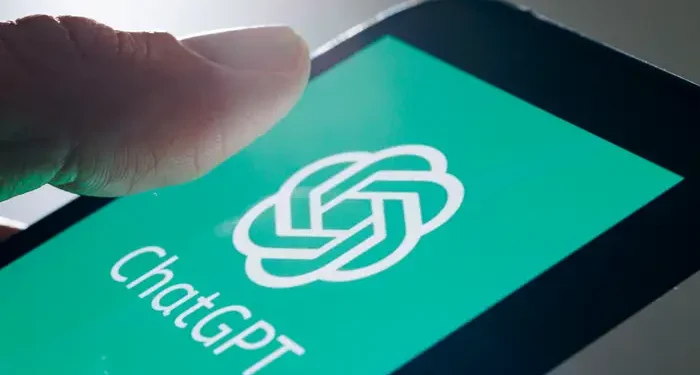To categorize ChatGPT as a large language model (LLM) chatbot would be an understatement of its immense value in marketing, communications, and PR. While its generative AI model is not a solution that can entirely replace human creativity, ChatGPT functions as a powerful tool that boosts personal and team efficiency and aids in creative brainstorming.
7 things you can do with ChatGPT
ChatGPT has the potential to help you expand your business or generate revenue as a budding solopreneur. It operates as your very own assistant and collaborator, available round the clock. It can support you by:
- Answering questions: Utilize ChatGPT as a search engine with instant, natural language responses.
- Assisting with professional documents: Generate ideas and compose drafts of resumes, cover letters, and other documents.
- Editing and spell-checking: Let ChatGPT review your text for errors.
- Creating content: Develop outlines or initial drafts of articles, blogs, essays, social media posts, and other content marketing and personal branding materials.
- Summarizing text: Condense lengthy texts into concise summaries as per your requirement.
- Translating: Translate text into Spanish, Turkish, Japanese, and many other languages to cater to your diverse audience.
- Optimizing SEO: Identify popular digital keywords and phrases on any topic through a simple query.
Furthermore, ChatGPT can aid in image creation, code writing and editing, and music composition!
How to use ChatGPT
Getting started with ChatGPT is more straightforward than setting up a social media account and simpler than using a search engine. The key is to approach it less like a technical skill and more like meeting a whimsical but exceptionally intelligent new friend.
Just like any relationship, certain tips can enhance your experience to maximize its benefits.
1. Sign up for an OpenAI account
To begin, visit ChatGPT at chat.openai.com and click the “Sign up” option under “Get started.” You only need an email and password, or you can sign up using your Google, Microsoft, or Apple account. If you opt for an email address, you’ll receive a prompt to verify and get started. Subsequently, you’ll find yourself one-on-one with ChatGPT. The interface is as simple as it gets, with a prompt to “Message ChatGPT.”
When it comes to choosing between a paid or free account, it’s advisable to start with the free version for a couple of days to get accustomed to the tool and determine if it suits your needs. Many users find it beneficial to upgrade to a paid account after testing its capabilities. The paid version offers advantages including:
- An updated model of 4.0, which has a better grasp of prompts and replies with enhanced information and improved natural language understanding.
- Enhanced access to live data from Bing rather than relying solely on the last training date (currently April 2023).
- Access to DALL-E for image generation, which can be a delightful experience.
- Priority access to ChatGPT during server congestion when other users have to wait.
2. Enter a prompt
Type your prompt in a similar manner to using any search engine. It can be a question like “Who was the 16th president of the United States?” or a directive such as “Compose a four-line poem about springtime.” Take your time, and don’t hesitate to experiment and have fun by asking whimsical, mundane, or thought-provoking questions.
Tips for writing effective ChatGPT prompts
Consider ChatGPT as a 7-year-old child with vast knowledge. While it possesses immense information, it lacks wisdom and a complete understanding of human nuances. To make the most of this powerful tool, follow these tips:
- Be specific and detailed. Frame your requests clearly with sufficient details to guide ChatGPT toward the desired outcome.
- Divide complex requests. For intricate tasks, break them down into smaller, more manageable steps for focused outputs.
- Experiment with open-ended questions. Broad queries are beneficial for ideation, allowing you to explore uncharted territories.
3. Interact with the AI to refine your answer
ChatGPT’s responses may not always align perfectly with your expectations. Feel free to request refinements in its responses. This could involve asking for a more concise answer or instructing it to adopt a more professional tone.
Likewise, you can ask it to include any missing data or, in the paid version, provide online references for you to verify the information and context. Unlike a human counterpart, ChatGPT won’t grow weary or frustrated with your attempts to obtain the response you seek. Moreover, you can refer back to earlier responses to extract the best from each iteration.
Using ChatGPT to create images
An added advantage of the paid ChatGPT model is access to DALL-E, a generative AI model for crafting graphic images. Similar to its text chat function, it may not provide exact solutions for a major design campaign, but it can offer your design team elements like backgrounds for print or digital designs or visuals for platforms like social media where time is of the essence.
The guidelines for utilizing DALL-E mirror those for the chatbot. Be as specific as possible in your requests and continue refining your queries to achieve your desired outcome. The AI’s capabilities are rapidly evolving, both in comprehending your inputs and generating graphic content.
ChatGPT is still learning
While technology is progressing swiftly, ChatGPT is continuously learning. For instance, a mere month ago, I would request DALL-E to “Create a photorealistic image of a snail riding the back of a tortoise.” The resulting images often depicted strange snail-tortoise hybrids due to the interaction and placement challenge. However, the generative AI now recognizes them as distinct entities.
The same learning curve applies to ChatGPT’s language processing. There might be instances where its interpretations fall short of human-level reasoning and contextual understanding. Moreover, these models could unintentionally introduce biases that deviate from your intent or audience expectations. Nonetheless, as you engage with the tool, both parties save time and resources. More significantly, it opens up avenues of exploration that may lead to novel ideas you hadn’t previously considered.


